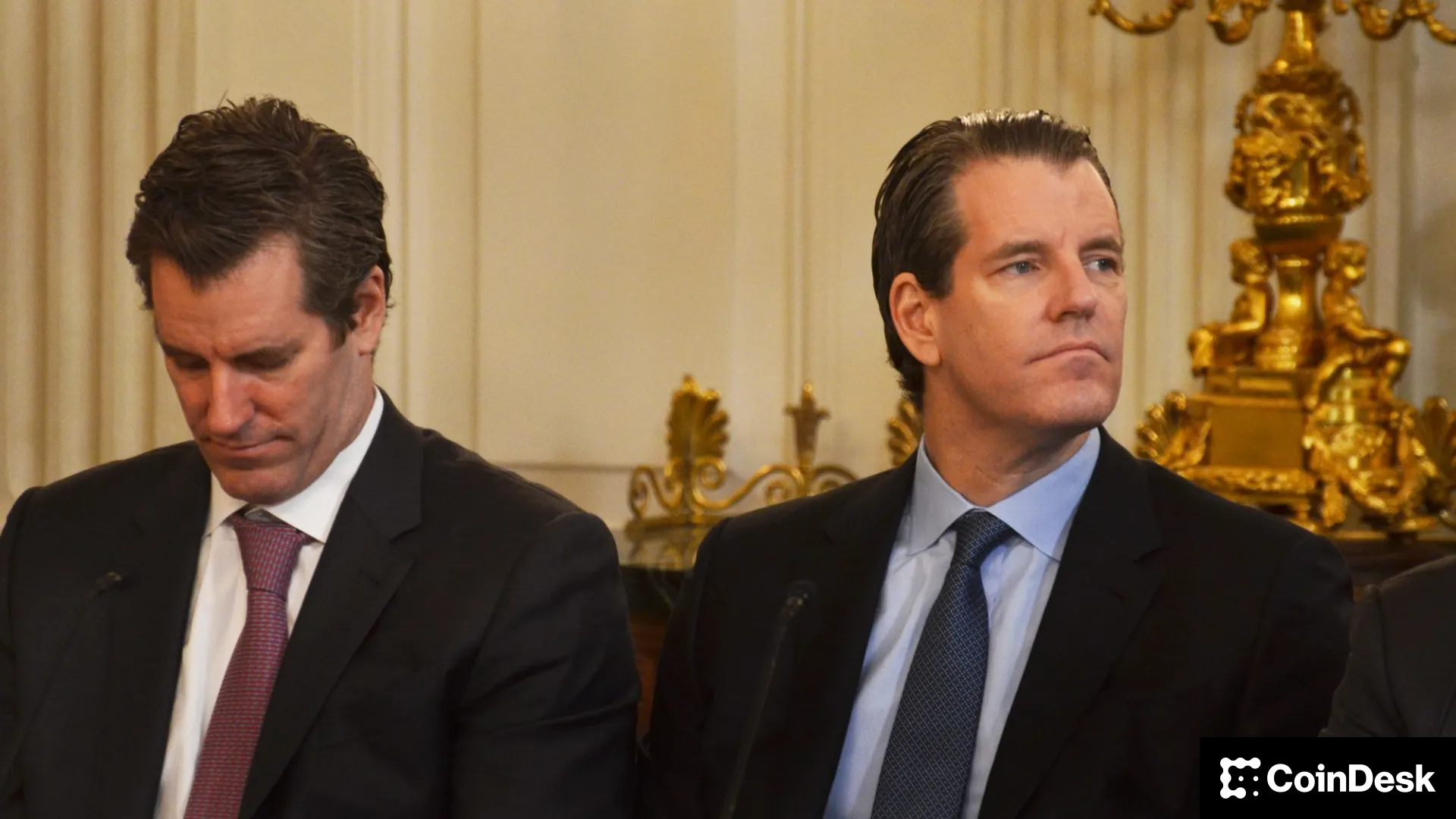Uncategorized
Asia Morning Briefing: Tron’s Public Listing Might be Investors’ ‘Visa’ Moment for Stablecoins

Good Morning, Asia. Here’s what’s making news in the markets:
Welcome to Asia Morning Briefing, a daily summary of top stories during U.S. hours and an overview of market moves and analysis. For a detailed overview of U.S. markets, see CoinDesk’s Crypto Daybook Americas.
Analysis
As Asia begins its trading day, Tron DAO’s TRX token is trading flat, up 1%.
Crypto traders don’t seem to be making much of a recent announcement that Tron—for all intents and purposes—is ‘going public’ on the NASDAQ via a reverse merger with SRM Entertainment, a lightly traded Nasdaq-listed toy company that is now rebranding as “Tron Inc.” complete with a TRX treasury strategy.
While a blockchain going public might be a little different than what traditional investors are used to, in theory, this might be a stablecoin infrastructure play.
The proposed public vehicle would give equity traders access to a network that is home to 30% of all stablecoin transactions (according to DeFi Llama data) takes place and where half of all USDT in circulation live.
In contrast, while Circle is a regulated issuer of USDC, a fiat-backed stablecoin, Tron Inc. would likely provide investors with indirect exposure to a blockchain network that facilitates a significant portion of global stablecoin activity in both the crypto market and the fast-growing global south, where the population is skeptical of the existing banking system.
Unlike Circle, which does not control the infrastructure on which USDC circulates, Tron operates the network itself.
This is where the two business models differ: Tron captures transaction fees and on-chain activity directly, whereas Circle’s business model is centered on custody, compliance, and interest income on the reserves backing USDC.
On-chain data shows that the Tron network hosts massive whale activities, with a recent note from CryptoQuant pointing out that 59% of May’s USDT volume on Tron came from transactions over $1 million.
Tron is also the network of choice for countries where the local populace doesn’t trust the existing banking system, from Lebanon to Argentina and Brazil.
As CoinDesk reported earlier, users in these emerging and underbanked markets typically prefer to access dollars directly by using Tether on Tron rather than thinking in terms of stablecoins or blockchain protocols more broadly.
While the market reaction has been muted, investors with experience in fintech or infrastructure plays may recognize the pattern.
Visa’s IPO in 2008, following MasterCard’s debut in 2006, allowed public markets to gain exposure to the payment rails of the developed world. The health of the western consumer and their desire to spend pushed fees through the respective networks and dividends into investors’ pockets.
In China, UnionPay never went public, and so equity investors have pinned their hopes on Ant Group’s long-awaited IPO to access Alipay’s rails just as Tencent’s listing gave exposure to WeChat Pay.
While some once speculated that virtual yuan infrastructure might power commerce in the global south, that thesis has not materialized.
Instead, commerce in underbanked regions is increasingly conducted using stablecoins and largely over Tron’s infrastructure.
If that trend holds, Tron Inc. may become the most direct public-market proxy for the payment rails of emerging markets.

Hong Kong’s First Solana Public Equity Listing Facilitated by OSL
OSL has facilitated what appears to be the first Solana (SOL) treasury allocation by a Hong Kong-listed company, enabling MemeStrategy (2440.HK), a digital asset venture backed by 9GAG, to purchase 2,440 SOL through its platform.
The acquisition of 2,440 SOL, worth approximately $370,000, was completed using OSL’s institutional platform, which provided execution, settlement, and custody services.
$1.9B Inflows Cement Crypto as 2025’s Risk-On Favorite: CoinShares
Digital asset investment products pulled in $1.9 billion last week, marking the ninth straight week of inflows, according to a recent report from CoinShares. That brings 2025’s year-to-date total to a record $13.2 billion, suggesting institutional appetite for crypto remains strong despite geopolitical volatility.
While broader markets showed caution, capital rotated into both digital assets and gold, traditionally seen as uncorrelated safe havens, hinting at crypto’s evolving role as part of a macro hedge strategy.
Bitcoin led the charge with $1.3 billion in inflows, snapping a two-week stretch of minor outflows. Ethereum followed with $583 million, the highest weekly total since February, and including its strongest single-day inflow this year. Together, the top two crypto assets accounted for over 95% of weekly inflows. But activity wasn’t limited to the majors: XRP reversed three weeks of outflows with $11.8 million in new capital, and Sui continued its hot streak with $3.5 million in inflows, a sign that select altcoins are gaining traction among professional allocators.
Regionally, the United States was responsible for virtually all inflows, while Hong Kong and Brazil posted net outflows of $56.8 million and $8.5 million, respectively. These regional divergences underscore the uneven pace of crypto adoption globally, despite total flows reaching historic highs.
Market Movements:
- BTC: Bitcoin surged past $108,000 with a 3.6% daily gain, showing strong resilience amid Middle East tensions as low exchange reserves and high volume pushed prices toward a key resistance level, according to CoinDesk Research’s technical analysis model.
- ETH: Ethereum jumped nearly 7% to $2,671 as whales accumulated $3.8 billion worth of ETH and spot ETFs recorded 16 consecutive days of inflows, driving strong breakout momentum above key resistance levels.
- Gold: Gold fell below $3,400 to $3,383 despite ongoing Middle East tensions, as analysts point to a looming U.S. debt ceiling crisis, not geopolitics, as the key driver for precious metals.
- Nikkei 225: Japan’s Nikkei 225 rose 0.21% in early trade Tuesday as Asia-Pacific markets traded mixed, with investors watching for the Bank of Japan’s policy decision and hopeful signs of de-escalation from Iran.
- S&P 500: The S&P 500 closed at 6,033.11, up 0.94%, as easing oil prices and hopes that the Israel-Iran conflict will remain contained boosted investor sentiment.
Elsewhere in Crypto:
Business
Crypto Trading Firm Keyrock Buys Luxembourg’s Turing Capital in Asset Management Push

Crypto trading firm Keyrock said it’s expanding into asset and wealth management by acquiring Turing Capital, a Luxembourg-registered alternative investment fund manager.
The deal, announced on Tuesday, marks the launch of Keyrock’s Asset and Wealth Management division, a new business unit dedicated to institutional clients and private investors.
Keyrock, founded in Brussels, Belgium and best known for its work in market making, options and OTC trading, said it will fold Turing Capital’s investment strategies and Luxembourg fund management structure into its wider platform. The division will be led by Turing Capital co-founder Jorge Schnura, who joins Keyrock’s executive committee as president of the unit.
The company said the expansion will allow it to provide services across the full lifecycle of digital assets, from liquidity provision to long-term investment strategies. «In the near future, all assets will live onchain,» Schnura said, noting that the merger positions the group to capture opportunities as traditional financial products migrate to blockchain rails.
Keyrock has also applied for regulatory approval under the EU’s crypto framework MiCA through a filing with Liechtenstein’s financial regulator. If approved, the firm plans to offer portfolio management and advisory services, aiming to compete directly with traditional asset managers as well as crypto-native players.
«Today’s launch sets the stage for our longer-term ambition: bringing asset management on-chain in a way that truly meets institutional standards,» Keyrock CSO Juan David Mendieta said in a statement.
Read more: Stablecoin Payments Projected to Top $1T Annually by 2030, Market Maker Keyrock Says
Business
Crypto Trading Firm Keyrock Buys Luxembourg’s Turing Capital in Asset Management Push

Crypto trading firm Keyrock said it’s expanding into asset and wealth management by acquiring Turing Capital, a Luxembourg-registered alternative investment fund manager.
The deal, announced on Tuesday, marks the launch of Keyrock’s Asset and Wealth Management division, a new business unit dedicated to institutional clients and private investors.
Keyrock, founded in Brussels, Belgium and best known for its work in market making, options and OTC trading, said it will fold Turing Capital’s investment strategies and Luxembourg fund management structure into its wider platform. The division will be led by Turing Capital co-founder Jorge Schnura, who joins Keyrock’s executive committee as president of the unit.
The company said the expansion will allow it to provide services across the full lifecycle of digital assets, from liquidity provision to long-term investment strategies. «In the near future, all assets will live onchain,» Schnura said, noting that the merger positions the group to capture opportunities as traditional financial products migrate to blockchain rails.
Keyrock has also applied for regulatory approval under the EU’s crypto framework MiCA through a filing with Liechtenstein’s financial regulator. If approved, the firm plans to offer portfolio management and advisory services, aiming to compete directly with traditional asset managers as well as crypto-native players.
«Today’s launch sets the stage for our longer-term ambition: bringing asset management on-chain in a way that truly meets institutional standards,» Keyrock CSO Juan David Mendieta said in a statement.
Read more: Stablecoin Payments Projected to Top $1T Annually by 2030, Market Maker Keyrock Says
Business
Gemini Shares Slide 6%, Extending Post-IPO Slump to 24%

Gemini Space Station (GEMI), the crypto exchange founded by Cameron and Tyler Winklevoss, has seen its shares tumble by more than 20% since listing on the Nasdaq last Friday.
The stock is down around 6% on Tuesday, trading at $30.42, and has dropped nearly 24% over the past week. The sharp decline follows an initial surge after the company raised $425 million in its IPO, pricing shares at $28 and valuing the firm at $3.3 billion before trading began.
On its first day, GEMI spiked to $45.89 before closing at $32 — a 14% premium to its offer price. But since hitting that high, shares have plunged more than 34%, erasing most of the early enthusiasm from public market investors.
The broader crypto equity market has remained more stable. Coinbase (COIN), the largest U.S. crypto exchange, is flat over the past week. Robinhood (HOOD), which derives part of its revenue from crypto, is down 3%. Token issuer Circle (CRCL), on the other hand, is up 13% over the same period.
Part of the pressure on Gemini’s stock may stem from its financials. The company posted a $283 million net loss in the first half of 2025, following a $159 million loss in all of 2024. Despite raising fresh capital, the numbers suggest the business is still far from turning a profit.
Compass Point analyst Ed Engel noted that GEMI is currently trading at 26 times its annualized first-half revenue. That multiple — often used to gauge whether a stock is expensive — means investors are paying 26 dollars for every dollar the company is expected to generate in sales this year. For a loss-making company in a volatile sector, that’s a steep price, and could be fueling investor skepticism.
-

 Business11 месяцев ago
Business11 месяцев ago3 Ways to make your business presentation more relatable
-

 Fashion11 месяцев ago
Fashion11 месяцев agoAccording to Dior Couture, this taboo fashion accessory is back
-

 Entertainment11 месяцев ago
Entertainment11 месяцев ago10 Artists who retired from music and made a comeback
-

 Entertainment11 месяцев ago
Entertainment11 месяцев ago\’Better Call Saul\’ has been renewed for a fourth season
-

 Entertainment11 месяцев ago
Entertainment11 месяцев agoNew Season 8 Walking Dead trailer flashes forward in time
-

 Business11 месяцев ago
Business11 месяцев ago15 Habits that could be hurting your business relationships
-

 Entertainment11 месяцев ago
Entertainment11 месяцев agoMeet Superman\’s grandfather in new trailer for Krypton
-

 Entertainment11 месяцев ago
Entertainment11 месяцев agoDisney\’s live-action Aladdin finally finds its stars




